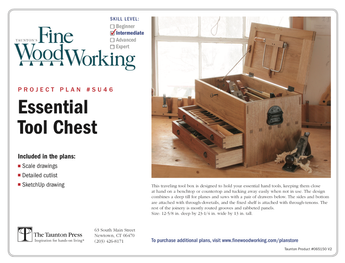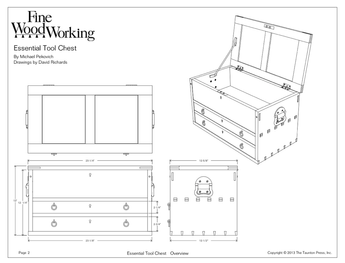I recently attended a presentation by Marc Adams. He showed a bunch of drinking straws held together with rubber bands and said that end grain of wood in magnification is like the end of the bunched drinking straws. He then wiped liquid soap on the end of red oak. He then blew,with his mouth, the length of the 14 inch board and bubbles appeared at the soaped end. I was surprised as were most in attendance. He then told us that gluing up 45 degree miters was basically an end grain to end grain operation. He suggested wiping a thin layer of glue on the end grain and letting it dry. After it’s dry apply glue again and clamp up. He said the joint would be 60% stronger. Do you concur with this statistic? Do you rountinely do this?
Whenever I glue up 45 degree frames, I apply the glue, clamp up, and when dry, cut and insert a “feather” or “key” in a slot cut with a rip saw for a flat bottom. The joints are incredibly strong. Do you think it would be worth the extra step to apply the glue, let dry, and apply again later as he suggests?
TIA,
Don















Replies
I do not agree with this procedure. Yellow glue will not "re-activate" after drying by simply applying more glue, as some other glues do. I think it's a waste of time. Your keyed joint will be plenty strong.
And a mitre joint in my book is not end grain. It is a exactly a mix of edge grain and end grain.
Jackplane In the double coat system you are not trying to reactivate the glue. You are creating a non pores surfis.I have use the double coat glue method always on end grain. The first coat seals the pores to allow the second to give a greater bond. This method only takes about 30 seconds extra per frame. It is well worth the time if it will eliminate even one failure. Mac
ok, but, how does sealing the end grain create a stronger joint?
pva glue works by bonding two porous surfaces, not by working with two sealed surfaces...
i've used pva as sizing but never in the method described in this thread.
Edited 2/9/2005 4:08 pm ET by JACKPLANE
DonC4
I agree with Mac. I've used this method for 30 years, and will continue to do so. However if your current joints are as strong as you suggest, I'm not sure it's worth the extra time and effort. I look at it this way.. If the joint is stronger than the wood, I'm OK. If the wood is stronger than the joint I need to re-engineer the joint. Some experimentation is often required.
GRW
I very seldom glue end grain. I always look for a better way. A joint that is 60% stonger than a poorly glued joint is still a poor joint. I try to imagine how well the joint will be holding a few years from now. I also think your spline joint method is a fine technique that addresses that problem nicely.
Bear
Although I do not have first hand experience with testing a double-glue application, I did just to read an article yesterday in FWW that recommended your suggestion. The only difference was that the initial glue coat was diluted 1 to 4 with water.
As for another question that was posted, yellow glue does soak into pores and holds the surfaces together like little fingers. However, this does not explain the level of strength from the bond. Many theories exist regarding how such a strong bond is formed with yellow glue. Currently, the most agreed upon hypothesis is that the glue forms a molecular bond with the bond. I don't remember the FWW # but I'll try to find it again.
Z
This forum post is now archived. Commenting has been disabled